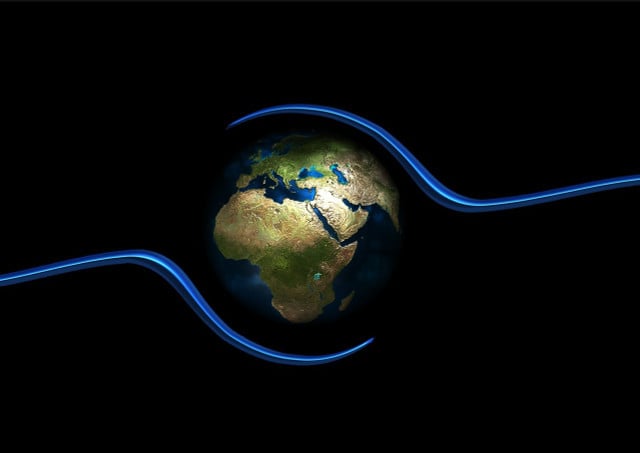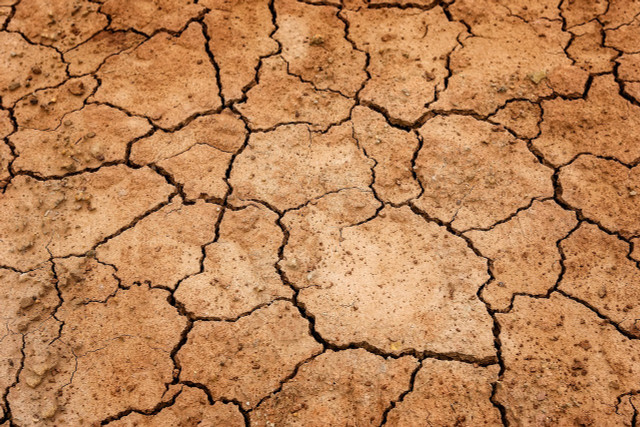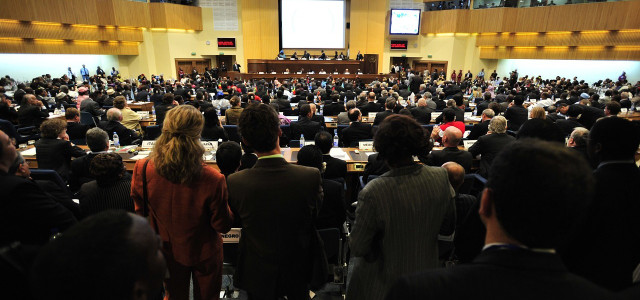Want to catch up on COP27 negotiations? Here's a quick summary of what COP27 is, who was involved, and what we can take away from it as we take urgent climate action.
Climate activists demand urgent action, but what response can we expect from the world’s key players? Whether you’ve been eagerly waiting for the results of this year’s UN climate change conference or you only recently heard of COP27 discussions — we’ll fill you in on what was discussed at COP27 in the Egyptian coastal city of Sharm el-Sheikh.
What Was COP27?

(Foto: CC0 / Pixabay / Kanenori)
COP27 stands for 27th Conference of the Parties to the United Nations Framework Convention on Climate Change. From November 6 to November 20, debates full of suspense, negotiations on the future of climate change, press conferences, protests, and more were held in Sharm el-Sheikh. But who attended this impactful event?
Besides 100 heads of state and governments, over 35,000 participants attended COP27, including climate activists from all over the world from organizations such as Fridays for Future. While high-level negotiations were only held with key players present, there were also some side events and press conferences that regular participants could join. Protests were only allowed to a certain extent and were subject to strict conditions and surveillance.
Who Were the Key Players at COP27?



(Foto: CC0 / Pixabay / geralt)
Seeing as the most important discussions at COP27 allowed only key players to participate, you may wonder, who were these key players? We’ve listed some of the main stakeholders for you below. Please note that 100 heads of state in total attended, so this is just a small insight:
Politicians and Countries:
- President Xi Jinping representing China
- Joe Biden as President of the United States
- Ursula von der Leyen as President of the European Commission
- Prime minister Rishi Sunak representing the United Kingdom
- Union Environment Minister Bhupender Yadaf representing India
- Luiz Inácio Lula da Silva as President of Brazil
- Cyril Ramaphosa as President of South Africa
- UN General Secretary António Guterres
- Sameh Shoukry as minister of foreign affairs of Egypt
Other Negotiating Blocs:
- ‘BASIC’ countries: This bloc is comprised of Brazil, South Africa, India, and China as fast-developing countries with high-pollution economies.
- G77 + China: Alliance of 77 developing countries and China.
- Umbrella Group: An alliance of non-EU developed countries, including Australia, Japan, Russia, and the United States.
- Africa Group: U.N. members pushing for climate financing.
- Climate Vulnerable Forum: This includes 58 countries that are most at risk from the impact of climate change, such as Bangladesh and the Maldives.
What Were Some of the Main Themes at COP27?



(Foto: CC0 / Pixabay / Tama66)
You may have heard some people refer to COP27 as “Africa COP” or “Implementation COP.” That’s because COP27 presented an opportunity to operationalize issues critical to the African continent. These issues had been discussed at COP26 in 2021 and refer to loss and damage discussions. But what does that mean, exactly?
Loss and Damage:
The concept of loss and damage is, essentially, to hold the biggest fuel polluters liable for the suffering caused by the climate crisis. Some examples of this suffering are extreme weather events such as floods, hurricanes, heatwaves, drought, wildfires, and onset climate disasters such as sea-level rise and melting glaciers.
This suffering mainly affects those who have contributed the least to global warming. Together, this group is referred to as MAPA, or most affected people and areas. These countries and people are demanding climate financing for mitigation. Mitigation refers to preventing further loss, which can be narrowed down to “reducing or preventing emissions of greenhouse gases,” according to the UN. Such financing includes economic costs on lives, livelihood, homes, and food systems.
Besides these economic costs, loss and damage talks address non-economic costs that are harder to pinpoint, such as loss of culture, sovereignty, identity, biodiversity, well-being, and many more. It’s worth mentioning that the concept of loss and damage has been around for more than thirty years, and was initially introduced by island nations and climate-vulnerable countries.
1,5 C Limit:
The Paris climate agreement had all signatories agree to work together to keep the global temperature rise under 2° C, with 1.5° C being the target. Everything above this was categorized as unsafe as it increased the risk of serious consequences such as extreme heat, an ice-free arctic, flooding, and more. Ever since this agreement was made, UN climate discussions revised this target regularly. Naturally, it was a big topic at COP27 too.
Energy Transition:
Another major theme of COP27 stems from the immediate political necessities of energy security and affordability. At COP26 in Glasgow, a commitment was made to phase out the use of coal, one of the biggest fossil fuels.
What Are the Key Outcomes of COP27?



(Foto: CC0 / Pixabay / Julius_Silver)
If you’re interested in details regarding all decisions made at COP27, have a look at the official implementation plan of COP27. If you are just looking for a brief overview of some of the key outcomes, we’ve got you covered:
- Loss and Damage: While many details remain to be negotiated, an agreement on a fund to provide loss and damage funding for vulnerable countries was made. This fund remains to be set up, and details on exactly how and from whom the finance is going to be provided must be negotiated more clearly.
- 1.5° C: Parties at COP27 agreed that limiting global warming to 1.5°C requires “rapid, deep and sustained reductions” in global greenhouse gas emissions, reducing them by 43 percent by 2030.
- Energy Transition: While certain countries at COP27, such as India, were fighting to phase down all fossil fuels, the resolution did not change. Despite the final text of COP27 acknowledging the need to boost “low-emissions energy,” this remains to be defined more precisely and put into action.
How Is the World Reacting to COP27 Discussions?
As in years before, public reactions to COP27 differ widely. Some see the progress on loss and damage and the decision to create a fund as a major breakthrough and a step towards a just and equitable transition. However, many critics argue that the decision is too vague and lacks concrete action.
Ursula von der Leyen states that COP27 was “a small step towards climate justice” but acknowledges that much remains to be done. Likewise, UN secretary António Guterres refers to the loss and damage fund as “a much-needed political signal to rebuild broken trust” while admitting that “clearly this will not be enough.”
Reactions from climate activists were critical to decisions made by key players. For example, German activist and head of Fridays for Future in Germany, Luisa Neubauer, states that countries would be “undermining their own promises” with gas deals, criticizing the lack of progress on the fossil fuel debate.
How Can I React to COP27 Discussions?



(Foto: CC0 / Pixabay / GoranH)
Hearing about the realities of climate change and discussions at COP27 may have you feeling helpless or experiencing a bout of eco-anxiety. But don’t worry; there are plenty of ways to combat this feeling. Knowing that “you are never too small to make a difference,” as Greta Thunberg states, is the first step.
Check out these 15 ways to combat climate change in everyday life that include tips on using your resources more carefully or saving energy, among many more great ideas. Green living doesn’t have to be complicated or expensive! If you’re ready to take your fight for climate justice to the next level, check out your local activism groups or other environmental organizations who are always happy to welcome new members.
Share your knowledge on climate justice with those around you, especially if you have to deal with climate change denial in your social circle. But while taking climate action is as important as never before, know that it’s okay to take a break from the news sometimes and go on a digital detox.
Read More:
- 6 Solutions to Deforestation and What You Can Do
- The 16 Best Movies & Documentaries About Sustainability & the Environment in 2022
- 8 Things You Can Do to Save the Ocean
Do you like this post?







